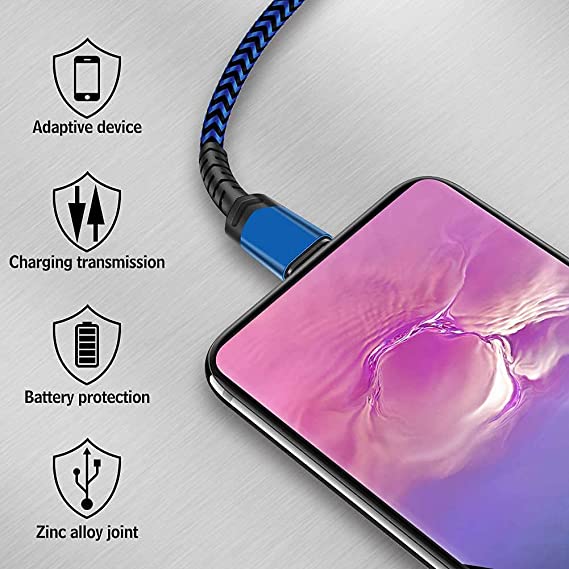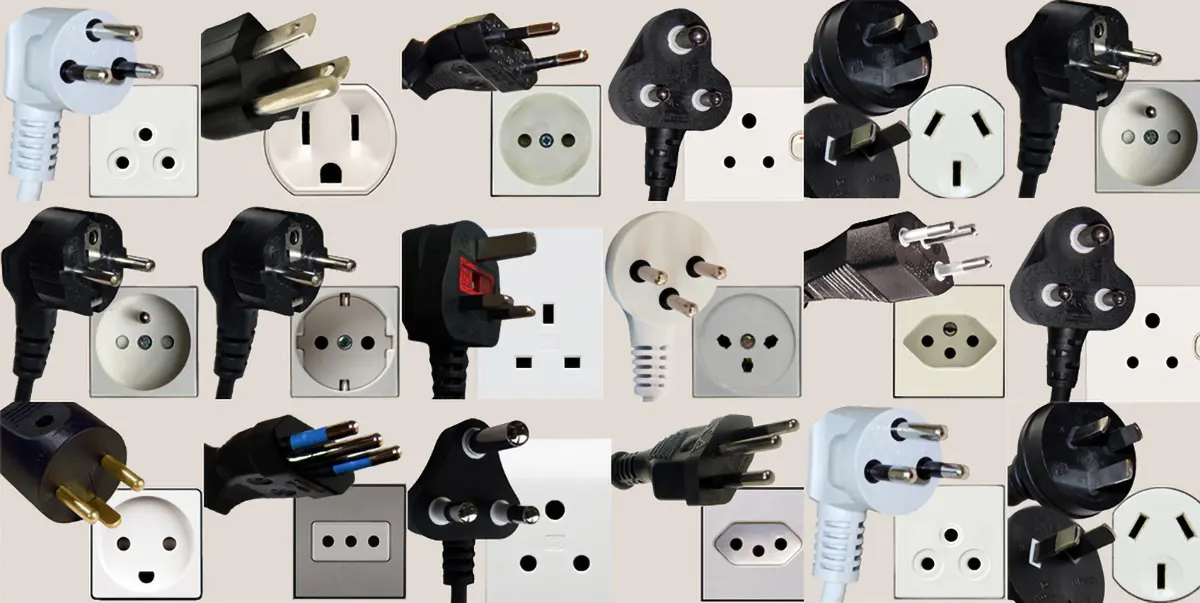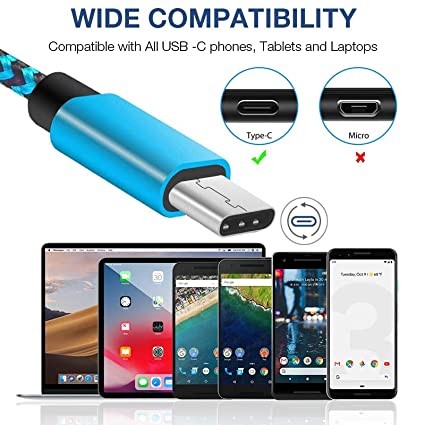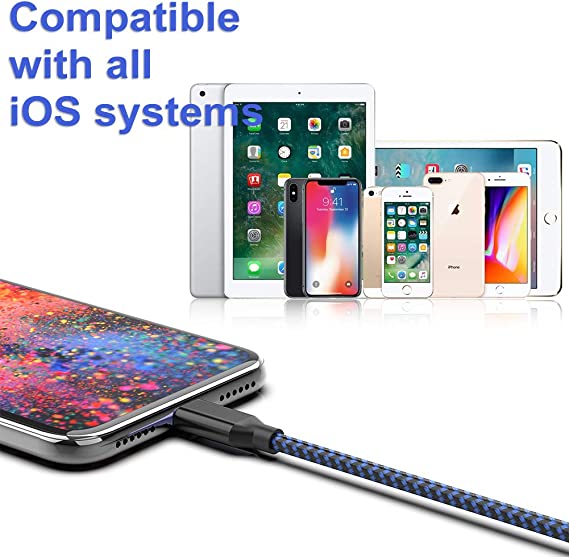Evolution of Qi Wireless Charging Standard: The Future of Mobile Charging

In today’s fast-paced world, convenience is paramount. From smartphones to laptops, we rely heavily on our devices to stay connected, informed, and entertained. However, the hassle of constantly plugging in and untangling cords can be a significant inconvenience.
This is where the Qi Wireless Charging Standard comes into play, revolutionizing the way we charge our devices. In this article, we will explore the benefits, evolution of Qi Wireless charging standard, and future prospects of the Qi Wireless Charging Standard.
What is the Qi Wireless Charging Standard?
Are you tired of dealing with messy cables and constantly searching for a wall outlet to charge your devices? Well, you’re in luck! The Qi Wireless Charging Standard offers a revolutionary solution to this problem. Qi is an open wireless charging standard developed by the Wireless Power Consortium (WPC). It is widely utilized in the consumer electronics market and supports power transfer of up to 15W to mobile phones and handheld devices. Let’s explore more about Qi wireless charging standard.
Qi Wireless Charging: An Overview
Qi wireless charging has become synonymous with the wireless power revolution, providing a convenient way to charge electronic devices like smartphones, headsets, and wearables. It establishes a standard for secure and interoperable wireless charging between Qi-enabled devices, ensuring compatibility and ease of use.
A Qi device refers to hardware that is certified to meet the standards set by the Qi wireless charging standard. These devices can utilize the same wireless chargers, making it convenient for users to charge their devices without the hassle of cords and cables.
Basically wireless charging technology utilizes two fundamental approaches: Inductive Coupling and Magnetic Resonant Coupling, both of which are harnessed by the Qi standard.
Inductive charging is suitable for short distances, typically less than 7 mm. It involves the transfer of charge between a closely positioned transmitter and receiver coil. Proper alignment of the coils is necessary to establish a connection, making inductive charging ideal for direct-contact scenarios. Some Qi transmitters employ multiple coils in different configurations, eliminating the need for precise alignment.
The Qi standard leverages resonant wireless charging in addition to inductive charging, enabling the charging of devices at greater distances of up to 45 mm. This spatial freedom is beneficial for applications such as embedding chargers under tables or desks or integrating them deeper into devices.
Qi Wireless Charging products combine both inductive and resonant charging technologies to deliver efficient and seamless charging experiences.
Key features of the latest Qi Wireless Charging Specification include:
- Support for both inductive and resonant charging with a range of up to 45 mm.
- Fast charging capabilities, allowing transmitters/receivers to deliver/receive up to 15 Watts of power (previously limited to 5 Watts).
- Improved thermal testing for transmitters.
- Enhanced Foreign Object Detection to prevent heating of nearby metal objects when an active transmitter is in use.
- Optional unique identifier for power receivers (WP-ID).
- Increased design flexibility for transmitters, with a choice of over 12 different transmitter specifications.
Major smartphone manufacturers such as Apple, Samsung, Huawei, Xiaomi, and others have embraced the Qi standard, making it widely supported in the industry. While some manufacturers have introduced their proprietary wireless charging technologies, Qi remains a common feature in smartphones from brands like OnePlus, Oppo, RealMe, and more. Apple, for instance, has its own MagSafe wireless charging standard, but still supports Qi in many of its devices. Qi’s popularity and adoption have made it a prevalent standard, ensuring that users can enjoy the benefits of wireless charging across a wide range of devices while still having compatibility with proprietary charging technologies.
Qi Wireless Charging Version Evolution History
Qi wireless charging emerged as a leading and collaborative solution in the consumer electronics market. Since its introduction in 2010, the Qi wireless charging standard has undergone significant advancements and improvements, shaping the landscape of wireless charging technology. With an open approach, Qi has gained widespread adoption and revolutionized the way we charge our mobile phones and handheld devices.
- Version 1.0 of the Qi standard charging was launched in 2010, enabling transmitters to deliver up to 5W of power through single coil, coil arrays, and moving coil designs. However, the flexibility of Version 1.0 transmitters was limited, requiring manufacturers to focus on optimizing Qi receiver designs for improved charging performance.
- In 2012, Version 1.1 expanded the range of supported transmitter types to 12, granting manufacturers greater freedom in design. It also introduced improved sensitivity for foreign object detection, enhancing user safety and usability. Additionally, Version 1.1 transmitters could be powered by USB power chargers.
- The breakthrough came in 2015 with Version 1.2, which introduced the Extended Power Profile (EPP), allowing for faster charging speeds of up to 15W. Power 56 receivers were assigned unique IDs, and thermal tests were implemented to optimize transmitter performance in varying temperature conditions.
- In 2021, the WPC released Qi Version 1.3, bringing significant updates and enhancements to the standard, particularly in terms of authentication and overall safety. These updates ensure a safer, more consistent, and reliable wireless charging experience.
- 2023 introduced Qi2 and the Magnetic Power Profile (MPP). Qi2 expands on previous standards and incorporates MPP, offering consumers greater convenience, efficiency, and safety. Legacy power profiles, such as Basic Power Profile (BPP) and EPP, will continue to coexist with the newer Qi2 standards, providing compatibility and versatility for wireless charging solutions.
The Qi 2.0 specification marks an exciting milestone in wireless charging, offering significant improvements in power capabilities, safety features, and user convenience. With the Magnetic Power Profile, Qi 2.0 paves the way for wireless charging advancements in various domains. As more devices become Qi 2.0 compliant, users can expect faster, more efficient, and seamless charging experiences. The future of wireless power transfer has arrived, with Qi 2.0 leading the charge.
With each iteration, the Qi wireless charging standard continues to evolve, pushing the boundaries of convenience and performance, and solidifying its role as a key player in the future of charging technology.
Capable of delivering up to 15W of power transfer, Qi has become the go-to standard for wireless charging. Its versatility is evident in the certification of over 7,500 types of smartphone chargers and hundreds of Qi-certified receivers in circulation today.
The impact of Qi is undeniable, with the wireless charging market projected to exceed one billion sales by the end of 2023 according to an estimation.
| Comparison of Qi Version history | |||
|---|---|---|---|
| Version number | Released | Maximum power | Notes |
| 1.0 | 2010 | 5 W | Power transmitters for wireless charging can take the form of a single coil, a coil array, or a moving coil design. These variations offer different charging capabilities and are utilized based on the specific requirements and design considerations of the wireless charging system. |
| 1.1 | 2012 | 5W | 12 distinct transmitter specifications, overseas item detection to save you heating of metallic gadgets close to transmitter, introduced powering transmitter over USB |
| 1.2 | 2015 | Baseline Power Profile (BPP): 5 W Extended Power Profile (EPP): 15 W | Increased maximum transmitter power to 15W, improved transmitter thermal tests, improved timing specifications, improved foreign object detection sensitivity, optional receiver ID (WP-ID). Branded by Samsung as “Fast Wireless Charging” (originally 10W, introduced on the Samsung Galaxy Note 5 and S6 edge plus, August 2015), it requires connecting the charging plate to a 15W Qualcomm Quick Charge 2.0 (9V) usb c port charger. , support 1.67 A). |
| 1.2.3 | 2017 | EPP Power Class 0: 5–30 W | Added Power Class 0 which allows the consumer to negotiate up to 30 W from the charger |
| 1.3 | 2021 | – |
A significant number of new conformance tests covering new features as well as features that were not tested in the older version of the specification; |
| 2.0 | 2023 | 15 W |
|
Pros and Cons of Qi Charging.
Wireless charging has revolutionized the way we power up our devices. One of the most popular wireless charging technologies is Qi charging. Qi power charging, pronounced “chee,” is a wireless charging standard developed by the Wireless Power Consortium (WPC). It allows users to charge their compatible devices without the need for cables. In this section, we will explore the pros and cons of the Qi charging standard and discuss its impact on our daily lives.
Advantages of Mobile Phone Wireless Charging:
Mobile phone wireless charging offers several advantages compared to wired charging:
- Enhanced Sense of Technology:Wireless charging eliminates the need for dragging long data cables, providing a sleek and futuristic charging experience. Simply placing the phone on the charger initiates the charging process, giving users a strong sense of technology.
- Compatibility:Qi charging offers a significant compatibility advantage. With the adoption of the unified Qi standard protocol, wireless charging is compatible with any mobile phone brand or electronic device that supports Qi. This eliminates the previous issue of multiple interface types and messy charging protocols found in wired charging. Qi-compatible devices can be charged using any Qi-certified wireless charging pad or station, providing a simplified and convenient charging experience. This compatibility extends to various devices, including smartphones, smartwatches, tablets, and more.
- Convenience:Wireless charging utilizes electromagnetic induction to transfer power between the charger and the phone. With no physical connection required, users can easily fully charge their phones by placing them on the charger. As long as the phone is compatible with the wireless charging standard, it can be charged regardless of the brand. In contrast, wired charging often requires specific interfaces such as USB-C for Android phones or Apple’s proprietary interface.
- Improved Interface Durability:Wireless charging reduces wear and tear on the data interface of mobile phones since there is no need for frequent plugging and unplugging of charging cables. Additionally, the charging coil for wireless charging is not exposed to the air, reducing the risk of oxidation and corrosion compared to wired charging.
Disadvantages of Mobile Phone Wireless Charging:
Despite its advantages, wireless charging also has some drawbacks when compared to wired charging:
- Limited Charging Distance:Current wireless charging technology has a short effective charging distance, typically ranging from 3 to 8 mm. This means that the phone needs to be positioned very close to the charger for effective charging. This limitation makes wireless charging a transitional technology until the development of “air charging” that allows for charging at greater distances.
- Restriction on Phone Usage While Charging: Most wireless chargers on the market require the phone to be placed flat in close proximity to the charger. This makes it difficult to use the phone while it is charging, necessitating the use of headphones to connect and listen to audio. Even with vertical wireless chargers, this limitation remains. In contrast, wired charging allows for more flexibility as users can move freely within the range of the charging cable.
- Lower Charging Efficiency: Wireless charging incurs energy loss due to electromagnetic energy dissipation. Typically, the power received by the phone is around 75% of the power transmitted by the charger. Furthermore, wireless charging power is generally lower, with most wireless chargers on the market offering 15W. In comparison, wired charging has minimal power loss, with fast charging capabilities reaching 40-50 watts or even higher.
- Electromagnetic Radiation:Wireless charging through electromagnetic induction generates electromagnetic waves in the charger. Although it may not pose significant harm to the human body, it produces more electromagnetic radiation compared to wired charging.
- Higher Cost: Mobile phone wireless charging requires additional components such as charging coils and related protection circuits in both the charging head and the phone. Additionally, high-frequency wave circuits are necessary for electromagnetic compatibility. As a result, the overall cost of wireless charging is higher than traditional wired charging.
Qi Standard Data Protocol.
The Qi standard is developed by the Wireless Power Consortium. As a universal, open standard Qi-enabled devices are able to connect to Qi chargers from any manufacturer. Qi was first released in 2008, and by 2017 was incorporated into more than 200 smartphones, tablets and other devices.
Qi Standard Data Protocol is a wireless power transfer protocol for inductive charging over short distances. It includes specifications for various aspects like operating frequency, coil setup, efficiency, power control, and communication protocols.
For secure power transfer, addressing design challenges such as efficiency, communication reliability, foreign object detection (FOD), thermal considerations, and over-voltage/current protection is crucial. Here, we’ll delve into some fundamental concepts of the Qi standard.
Qi-Compliant Charger Block Diagram.
The inductively-coupled wireless power system operates by transferring AC voltage from the primary coil to the secondary through magnetic coupling. Alignment of transmitter and receiver coils is crucial for efficient power delivery, and these coils also transmit communication packets.
Before actual power delivery occurs, specific phases must be completed. Let’s briefly delve into the Qi-compliant charging algorithm steps.
Analog Ping
In standby mode, the transmitter remains idle without significant power output. It utilizes “analog pings” by periodically applying test pulses to the primary coil to detect potential power receivers. The presence of a receiver alters the voltage across the primary coil, distinguishing it from passive metal objects like coins or keys.
Digital Ping
Once a potential receiver is detected, “digital pings” are used for communication. These longer pulses power up the receiver, prompting it to send signal strength packets back to the transmitter. Valid packets help distinguish compliant receivers from passive objects or non-Qi-standard receivers.
Identification and Power Transfer Phases
The power receiver shares data packets containing its Qi version, maximum power requirements, and other configuration data during the identification phase. Subsequently, the power transfer phase begins, allowing the receiver to measure received power and relay this information to adjust transmitted power levels and detect foreign metal objects potentially siphoning power.
Detection of foreign objects is done by comparing transmitted and received power levels. A significant disparity suggests the presence of a metal object near the transmitter, prompting the system to halt power transfer for safety.
Power Level Adjustment by the Transmitter
Adjusting power levels involves modifying parameters like operating frequency and AC signal amplitude applied to the transmitter coil. By operating frequencies around the LC circuit’s resonance frequency, the transmitted power can be controlled.
MPP in Qi Wireless Charging
Magnetic Power Profile (MPP) is the core technology of the Qi wireless charging standard Qi 2.0 (Qi2). MPP technology uses magnets to automatically align the wireless charging transmitter and receiver coils perfectly before wirelessly transferring power. Developed by the Wireless Power Consortium (WPC) and introduced in January 2023, MPP represents a significant advancement in wireless charging technology.
One of the main challenges with Qi 1.0 wireless charging was the requirement for close proximity between the transmitter and receiver coils for effective power transfer. Misalignment would result in reduced charging rates and inefficiency. Qi2’s MPP technology addresses this issue by leveraging magnets to maintain optimal positioning of the charging devices. This improvement in alignment enhances charging efficiency and has the potential to increase charging speeds.
The development of the Magnetic Power Profile within Qi2 was based on Apple’s MagSafe technology, with contributions from other WPC members. This profile ensures precise alignment between charging devices, leading to improved energy efficiency and faster charging for smartphones, tablets, and other rechargeable battery-powered devices.
By employing MPP, wireless charging becomes more powerful, enabling faster and more efficient charging. This increased power capacity opens up possibilities for charging larger devices, including tablets and laptops, in addition to smartphones and wearables. Higher power levels result in reduced overall charging times, enhancing user convenience.
Misalignment between the transmitter and receiver coils can lead to energy loss and the generation of heat, which can negatively impact battery health. However, Qi2’s MPP technology, with its magnetic alignment capability, helps prevent misalignment and minimizes heat generation. This reduces strain on device batteries and may contribute to extended battery life.
The wireless charging Qi standard has revolutionized the way we charge our devices, providing a convenient and efficient solution for powering up our smartphones, tablets, and other rechargeable devices. With its interoperable and widely adopted nature, Qi has become the industry standard for wireless charging.
One brand that has embraced the Qi standard and made significant contributions to its development is APPHONE. By incorporating the Qi technology into their devices, APPHONE has ensured compatibility and seamless integration with a wide range of Qi-certified chargers. This commitment to the Qi standard demonstrates their dedication to providing their customers with convenient and reliable charging solutions.
What is the Qi standard for wireless charging?
The Qi standard is a globally recognized specification developed by the Wireless Power Consortium (WPC) that defines a method for wireless power transfer. It outlines how devices can wirelessly charge over short distances (up to 4 cm) using inductive charging technology. Qi ensures interoperability and safe, efficient wireless charging among devices that adhere to this standard.
What is Qi and PMA charging?
Qi and PMA (Power Matters Alliance) are two distinct wireless charging standards. Qi, developed by the Wireless Power Consortium, utilizes inductive charging for power transfer. It’s widely adopted and supported by various devices. PMA, on the other hand, uses inductive and resonant charging methods. However, in terms of market adoption and compatibility, Qi has seen broader acceptance and integration among devices.
What is the standard frequency for Qi wireless charging?
As per the Qi specification, the AC frequency for the primary coil in “low power” Qi chargers (up to 5W) ranges from 110 to 205 kHz. For “medium power” chargers (up to 120W), the AC frequency is between 80 and 300 kHz.
Do all phones have Qi?
Most of the latest new smartphones have Qi wireless charging capabilities, but older phones may not.
How do I know if my phone is Qi standard?
If you see the Qi logo, then your phone is Qi-enabled and will work with a Qi wireless charger. For Android users, the process is a bit more complicated. Some Android phones come with built-in Qi wireless charging, while others require you to purchase a Qi-compatible case or receiver to enable wireless charging.
Is Qi the same as wireless charging?
Not quite. Wireless charging represents the technology itself, whereas Qi refers specifically to a wireless charging standard. Qi outlines the method for delivering power wirelessly and ensures secure, standardized operation among all Qi-certified devices. Other wireless charging technologies may adhere to Qi or different standards to provide dependable wireless charging for devices.
What is the Qi wireless charging method?
The Qi wireless charger method employs inductive coupling to transfer power from a qi wireless charging pad or base to a compatible device. This method involves two coils: a transmitter coil in the charging pad and a receiver coil in the device. When these coils are aligned, an alternating magnetic field is created, inducing a current in the receiver coil, which then charges the device’s battery wirelessly. The wireless charger qi standard defines the specific parameters and protocols for this charging method to ensure efficiency, safety, and interoperability among Qi-certified devices.
How do I turn on Qi charging?
For most smartphones, wireless Qi charging is typically enabled by default. Simply connect the wireless charger to a power outlet and place your phone at the center of the charging pad. When charging begins, a power or charging icon will appear.
If your phone doesn’t have wireless charging activated by default, access your phone’s settings to enable it. For instance, on iPhone 8 and later models, navigate to Settings > General > Accessibility. Look for the Wireless Charging option and toggle it on to activate
Share This Artcle:

Fast delivery
Fastest delivery within 22 days

Quick proofing
Fastest 3-day proofing cycle

After-sale protection
24-month long warranty

1V1Customer Service
Professional customer service follow-up












